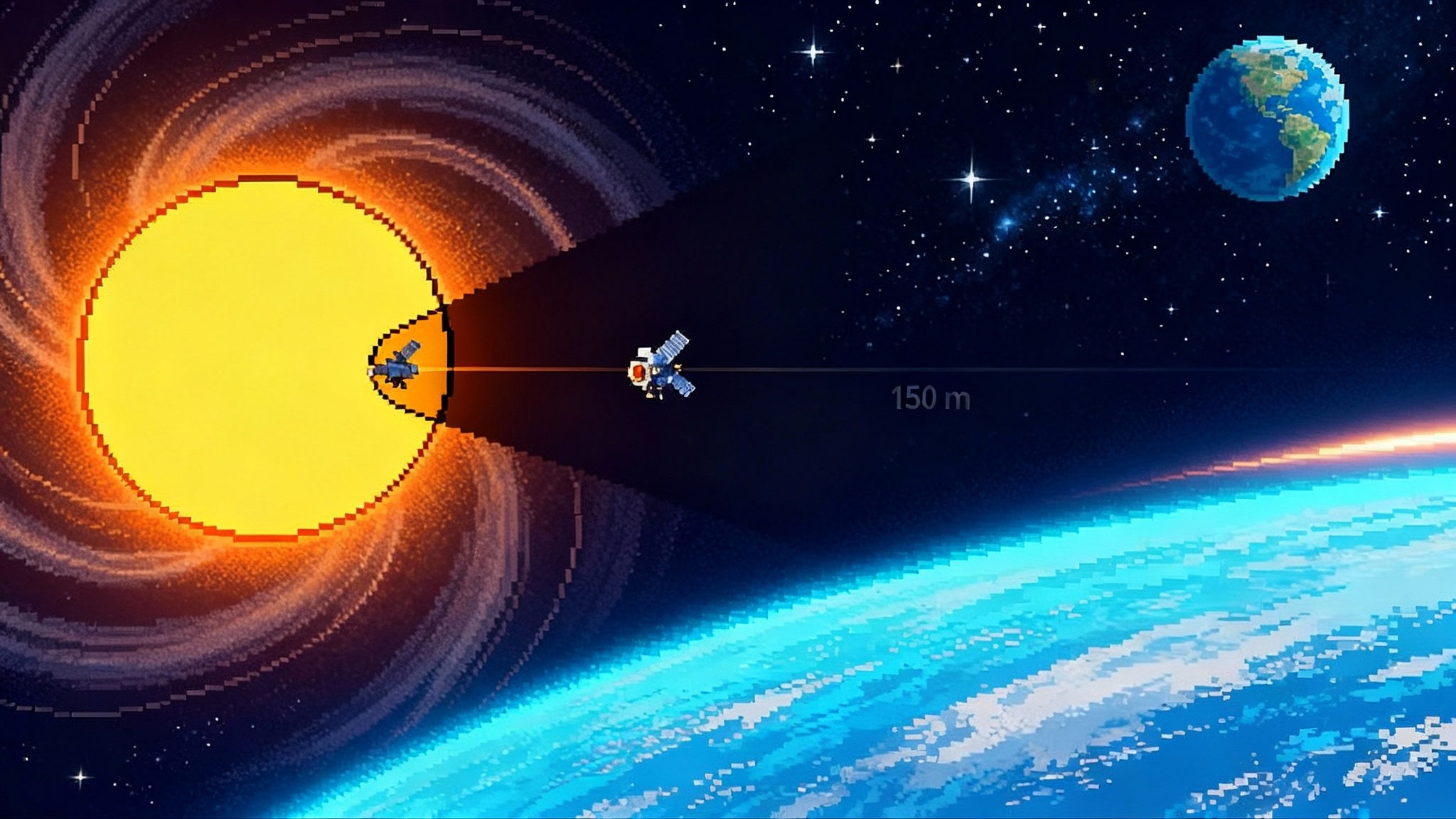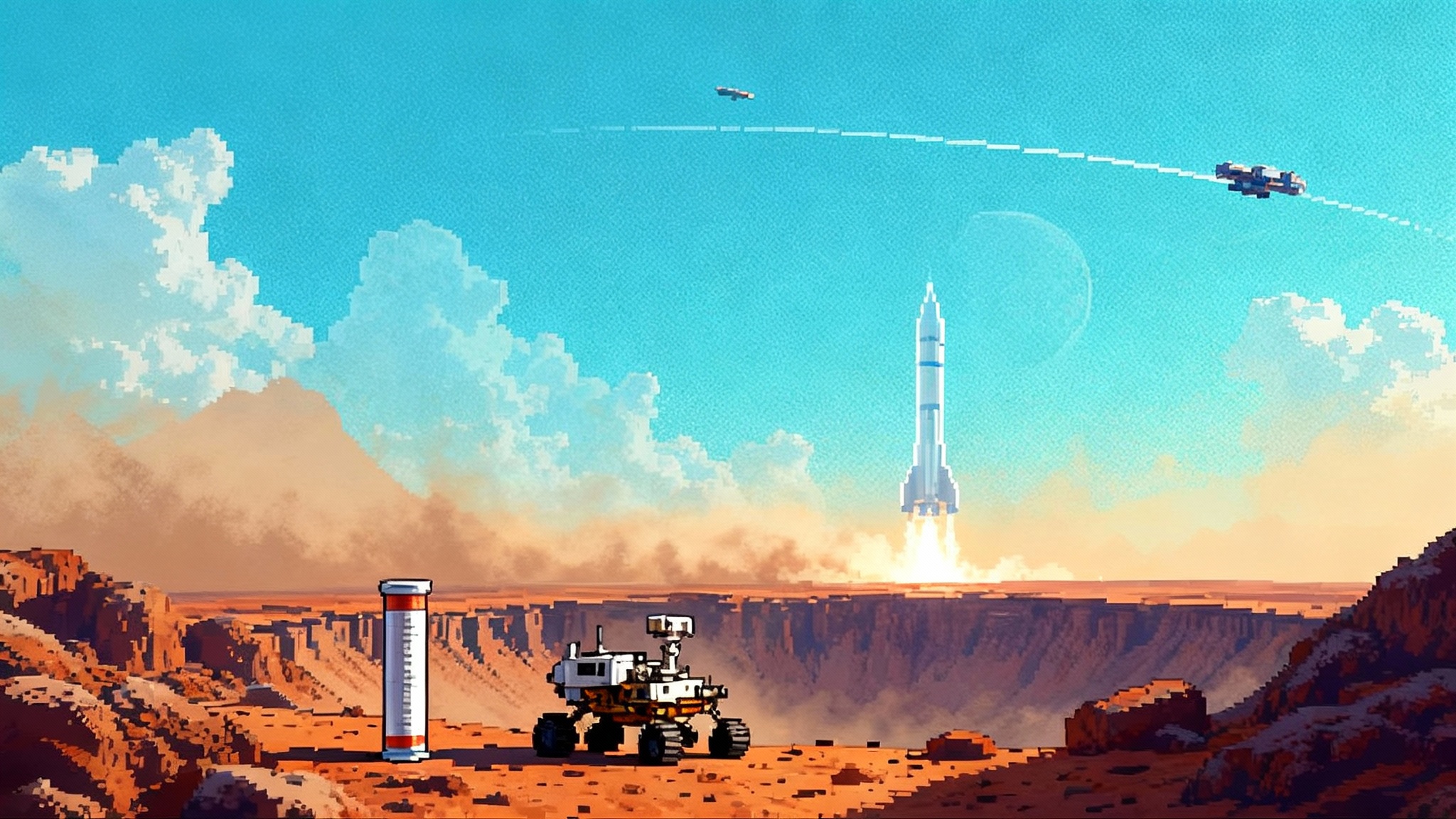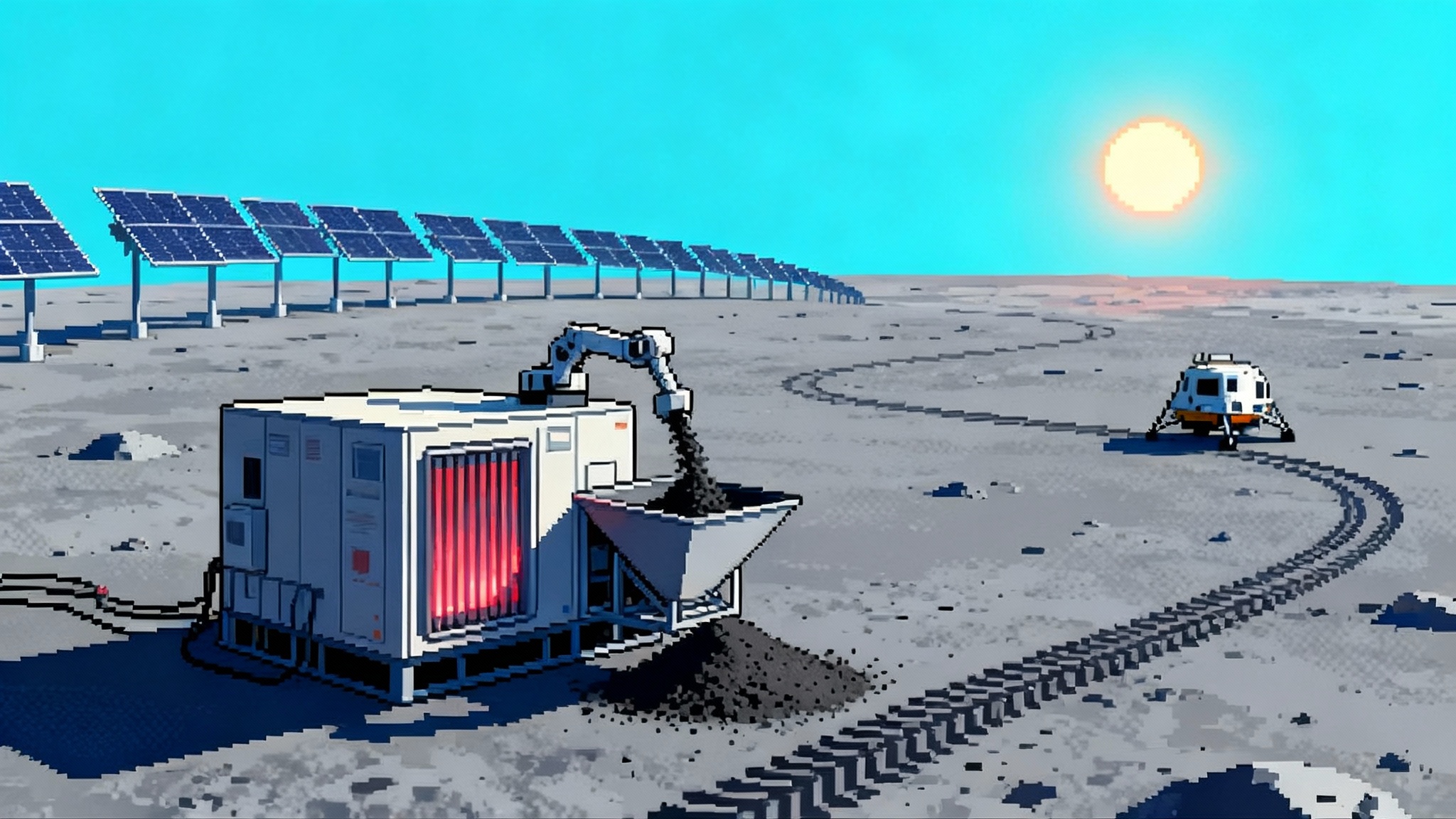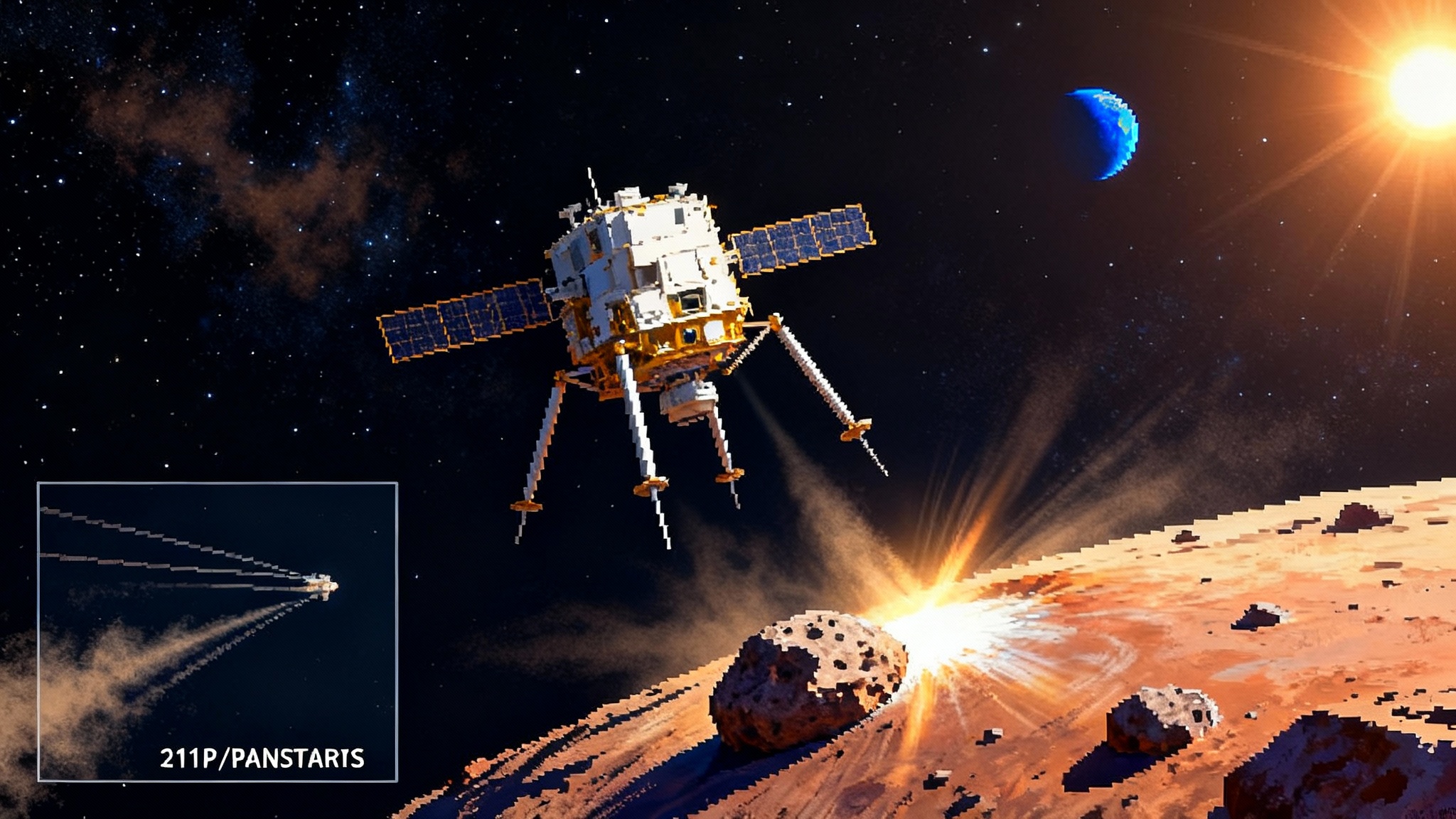Athena's 12 Hours Sideways Reset Lunar Surface Logistics
Two commercial landers touched down days apart. Firefly’s Blue Ghost worked through a full lunar day, while Intuitive Machines’ Athena landed near the south pole and operated for just 12 hours on its side. Here is what those bookend outcomes proved about LTE comms, PRIME-1, and Artemis surface logistics.
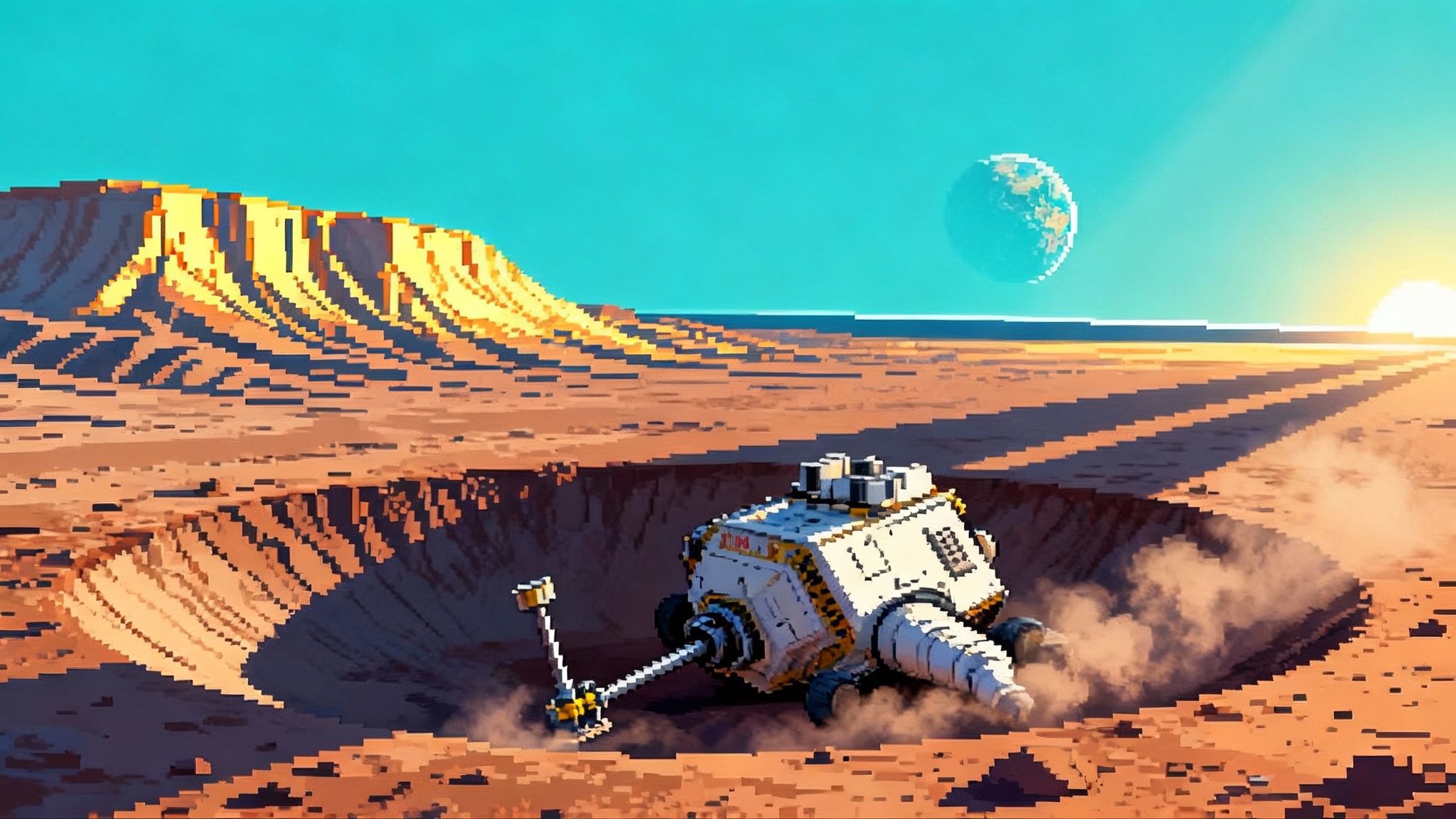
The week the cadence changed
Two landers reached the Moon and operated within the span of a few days. Firefly Aerospace’s Blue Ghost settled into Mare Crisium on March 2 and ran for a full lunar day. Four days later, Intuitive Machines’ Athena reached the rimlands of the south polar region. One was a long, upright shift; the other, a short shift at a bad angle. Taken together, they are not just two more mission patches. They are a sign that the Moon is becoming a place where commercial vehicles clock in on a schedule, not a place we visit once a decade.
A landing at the limits of daylight
On March 6, 2025, Athena targeted Mons Mouton, a hundred‑kilometer plateau within five degrees of the south pole. Terrain here is tricky. Picture a high‑altitude solar farm scattered across frozen dunes. Ridges cast long, knife‑edged shadows. Small boulders and gentle slopes become big problems when the Sun sits low and solar arrays must sip light.
Athena reached the surface, but images and telemetry later showed the lander had come to rest on its side in a small crater, roughly 250 meters from the intended target. The orientation throttled power and limited what could be deployed. Even so, the mission captured images, moved instruments, and returned data before Intuitive Machines declared the mission complete around midnight Central Time the following day. NASA detailed the brief mission, noting both the off‑nominal attitude and the historic proximity to the pole.
Twelve hours is not what was planned. It was enough to prove several things that matter for future crews.
Even sideways, three big firsts
-
Closest to pole landing: By touching down at Mons Mouton, Athena reached closer to the south pole than any previous lander. That is more than a bragging right. It is a power, visibility, and thermal test in the same neighborhood where astronauts will work.
-
PRIME‑1 hardware in lunar conditions: NASA’s Polar Resources Ice Mining Experiment 1, a two‑part suite made up of the TRIDENT drill and the MSolo mass spectrometer, exercised its mechanisms. The drill demonstrated its full range of motion in the lunar environment, and MSolo detected gases consistent with the lander’s own exhaust. That is a useful calibration step, like smelling your own coffee beans before tasting the roast you actually care about.
-
First lunar LTE network powers up: Nokia Bell Labs’ Lunar Surface Communications System, a compact cellular network in a box, booted and responded to commands during a brief power window. There was not enough energy to place a first LTE call from the Moon, but the hardware came alive and talked to controllers. Nokia confirmed its lunar LTE milestones, validating that terrestrial‑grade gear, ruggedized for the Moon, can be part of the surface toolkit.
Individually, none of these would headline a victory parade. Together, they draw a thick underline beneath the logistics that will make or break Artemis surface work: communications, resource prospecting, and mobility.
Why this matters to Artemis logistics
If you view Artemis through the lens of a construction site, Athena’s brief operations were the first day a foreman tests the radios, starts the drills, and scouts the alleyways where trucks will turn. Success is not a plaque on the wall; it is a lower risk line item. Work on in‑situ resource utilization stands to accelerate as lunar factories move closer.
1) Telecom that fits in your pocket
Athena’s LTE demo points to a simple idea with big leverage. Use commodity cellular networking for local links on the Moon, then hand off to long‑haul relays. On Earth, your phone talks to a nearby tower, and the tower backhauls across fiber. On the Moon, a small lander or a mast‑mounted node can be the tower. Rovers, hoppers, and suit‑worn devices become phones. Backhaul routes through direct‑to‑Earth antennas when visible, or via orbiters and future relay satellites when Earth dips below the horizon.
What to do next, why, and how:
-
Standardize the modem: Give every rover and payload a small, low‑power LTE or future 5G modem as standard equipment. Why: power‑efficient, well‑understood, and secure radios reduce integration time and enable plug‑and‑play field networks. How: publish a common interface control document for lunar cellular, including frequency plans, encryption, and handover behavior to orbital relays.
-
Build two types of towers: fixed masts on landers and deployable beacons on rovers. Why: shadowed crater rims and boulder fields will obstruct line‑of‑sight; multiple cells create coverage diversity. How: treat each mission like a mesh starter kit, with at least one node capable of self‑righting and shedding dust.
-
Tie LTE to the Near Space Network: bridge local cells into NASA’s relay services so voice, telemetry, and high‑rate science flow across one logical network. Why: a unified network simplifies crew procedures. How: test end‑to‑end routing during uncrewed missions, mapping latency, jitter, and packet loss and training autonomy to cope with them.
These steps are not exotic. They are project management and interface discipline, aided by the fact that LTE hardware already connects billions of devices on Earth.
2) Prospecting that respects the physics
Water is the Moon’s diesel. You can split it into oxygen for breathing and hydrogen for propellant. But at the south pole, volatiles hide in places with very little sunlight and very low temperatures. You do not confirm them with a single scrape. You confirm them with a campaign.
PRIME‑1’s drill and spectrometer did not get the sunlight and time they needed to sample regolith at depth, but the mechanisms moved and the detector sniffed. That matters for three reasons:
-
Mechanisms in real dust: Lunar dust is glassy and clingy. Showing that the drill can actuate at the surface without binding is a baseline test for deeper, longer runs on future attempts.
-
Calibration in context: MSolo’s detection of lander exhaust is a real‑world check that the instrument sees what it should when gases are present. That makes future detections, including subtle signals from buried volatiles, more trustworthy.
-
Operations choreography: Even an abbreviated sequence yields timings, power draws, and error codes that inform the next attempt. Knowing how long a drill consumes peak power or how much heating a spectrometer needs is the difference between a plan that fits in the day and one that runs out of sunlight.
Context matters here. NASA ended its VIPER rover project in 2024, shifting the search for polar ice to a portfolio of smaller tests and commercial missions. That makes PRIME‑1‑class results like motion, sniff tests, and power profiles more valuable. They are the bite‑size lessons that will shape how crews prospect and how commercial providers package tools for them. For a parallel programmatic shift, see NASA’s 2025 reset.
What to do next, why, and how:
-
Fly the drill again with a self‑righting mount: Why: tip‑overs happen. How: mount the drill on a hinged, spring‑assisted frame that can reach the ground even if the deck tilts.
-
Establish contamination baselines: Why: thruster plumes and venting can masquerade as ice signals. How: schedule instrument warm‑ups and plume events with spacing that lets gases dissipate, and log wind‑tunnel analog data to train filters.
-
Pre‑plan partial wins: Why: not every landing is upright. How: define Plan B sequences that favor mechanism motion, data types, and power cycles that are most informative when time is short.
3) Mobility that reaches where wheels cannot
Artemis crews must reach into permanently shadowed regions. Wheels struggle when the terrain falls away into darkness. Hoppers can make short, powered jumps and drop into places a rover would never risk.
Athena carried an Intuitive Machines Micro Nova hopper called Grace and a small rover from Lunar Outpost. Neither could be deployed from a sideways deck. Even so, this mission refined the list of must‑haves for future mobility:
-
Egress in bad attitudes: Ramps and retention systems need to function if the lander is tilted. A spring‑loaded release, a winch line, or a swing‑arm that lowers a rover to the ground gives you an out when the deck is not level.
-
Hopper staging pads: A small, level pad that can pop up or self‑level would let a hopper fire cleanly even if the main deck is skewed. Lunar dust is the enemy of reliable ignition and stable takeoff. A prepared patch reduces risk.
-
Autonomy that assumes shadows: Mobility software must treat permanent darkness as a feature, not a bug. That means training on low‑light navigation, tailoring sensor suites for thermal and lidar cues, and defining aborts that return to the nearest lit ridge.
What to do next, why, and how:
-
Design rovers and hoppers to be attitude‑agnostic on release. Why: you cannot script your way out of a bad landing. How: test with 10, 20, and 30 degree tilt rigs in vacuum chambers and require payload providers to pass.
-
Co‑package mobility with comms. Why: a rover that carries a deployable LTE repeater extends coverage for itself and for astronauts. How: standardize a postage‑stamp radio module and battery that any mobility platform can accept.
Cadence and the commercial operating model
Firefly’s Blue Ghost was upright, long‑lived, and methodical. It completed more than fourteen days of surface operations and even eked out hours into lunar night. Athena was rapid, constrained, and instructive. Two very different days at work, one after the other, show the value of cadence. The same playbook is emerging across deep‑space missions, from CLPS flights to small‑sat expeditions that pursue an interplanetary playbook rewrite.
The operating model also shifts in practical ways:
-
Acceptance criteria favor minimum viable ops: If a payload can provide a meaningful result within a few hours under imperfect conditions, it is a better fit for early Artemis work. Design like a field geologist, not a lab scientist.
-
Power and thermal budgets become first‑class citizens: Sideways landings are extreme cases of a general truth near the poles. Sun angles vary, shadows move, and temperatures swing. Customers will pay a premium for hardware that sips power and keeps itself warm.
-
Communications as a service: Athena hints at a near‑future where a lander powers up a local cell, sells capacity by the megabyte to rovers and suits, and backhauls over whatever relay is available. A vendor that can provide plug in and talk will become the default choice on joint missions.
-
Self‑righting and dust‑tolerant by default: Legs that lock, airbags that deflate asymmetrically, or body shapes that encourage a roll to stability are no longer nice to have. So are anti‑dust coatings, electrostatic wipers, and covers for critical optics.
These are not abstract trends. They are purchase orders and interface documents. The week in March put them on a tighter schedule.
Concrete actions to take before the next landing
-
For mission designers: add a sideways mode. Pre‑compute power, thermal, and comms configurations that assume a 15 to 30 degree tilt and partial shadow. Train operators on those checklists and rehearse a 6 to 12 hour sprint.
-
For payload providers: ship with attitude‑tolerant brackets and dust covers. If your instrument can articulate to reach the ground from a tilted deck and can shed dust without human help, you just upgraded your odds of success.
-
For comms teams: turn LTE from demo to service. Define the uplink budget, antenna patterns, and handoff rules that let a rover roam between cells and relays without operator intervention. Bake in cybersecurity from day one.
-
For mobility teams: test egress the hard way. Run vacuum‑chamber trials with tilt rigs, crushed‑basalt simulant, and low‑Sun lighting. Require pass‑fail criteria that mirror the real terrain at Mons Mouton and other polar sites.
-
For program managers: buy time, not just hardware. Write task orders that pay for day‑of‑landing decision support, on‑call analysis for plume contamination, and rapid telemetry triage. Those services convert short missions into long lessons.
The bigger picture
It is tempting to score missions as wins or losses. Blue Ghost stood tall for two weeks. Athena lay on its side for half a day. The real scoreboard is a checklist of risks retired. In one week, the commercial lunar community retired several: proving that commodity cellular gear can operate on the Moon, confirming that a polar landing can reach the right neighborhood, and moving a resource‑hunting drill in true lunar dust.
When astronauts step out at the south pole, they will need clear voice links, short‑haul data, and reliable tools that work in cold, dusty twilight. The fastest way to get there is to fly often, learn fast, and buy clever redundancy. March 2025 showed what that looks like in practice. A long, upright shift and a short, sideways one both punched the clock. The Moon is starting to feel less like a destination and more like a workplace. That is the breakthrough.
